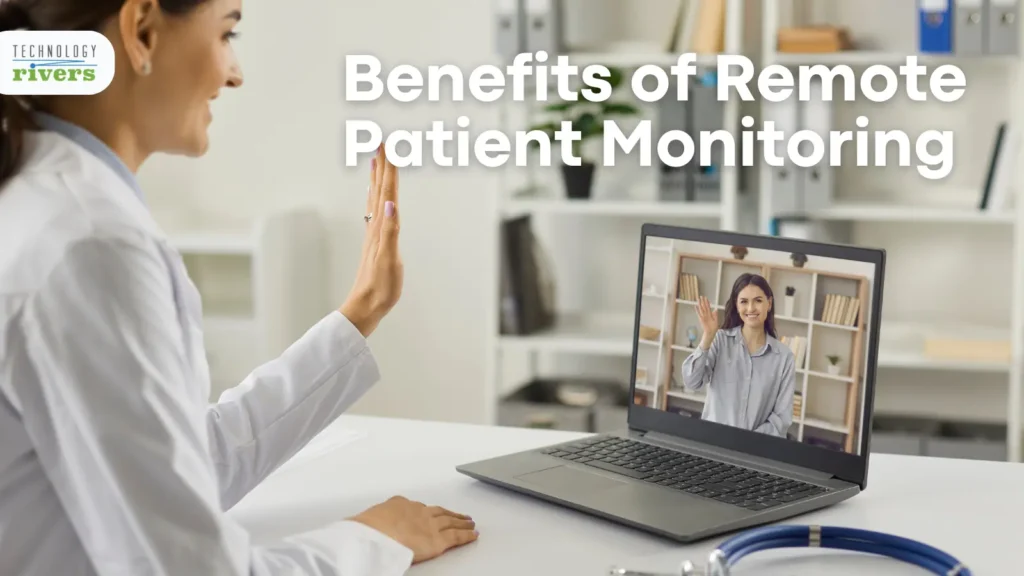
Blogs » Complete Guide to Understanding, Identifying, and Mitigating Software Vulnerabilities
Table of Contents
Nowadays, software security is a vital component for companies and individuals alike. The most important facets of our lives, such as identity, finance, and healthcare, often rely on code nowadays. Therefore, putting all this data at risk must be avoided at all costs.
Cyber attacks are a real issue that businesses of all sizes face – from data heists to ransomware, numerous attack types take advantage of software vulnerabilities as a gateway into IT configurations. Hence, identifying these vulnerabilities is essential in protecting organizations against cybersecurity threats.
What are Software Vulnerabilities?
Simply put, software vulnerabilities are flaws or weaknesses in a code that malicious agents can utilize to gain access to a network’s sensitive data and perform unauthorized actions, which are considered unethical or illegal.
Why Vulnerability Assessment is Important for Cybersecurity?
There are different types of vulnerabilities and techniques being utilized by hackers to exploit them, making vulnerability assessment vital in a cybersecurity strategy. Regularly reviewing your network for any security weakness will help your organization prevent unauthorized access to applications and prevent the exposure and exploitation of sensitive data.
How Vulnerabilities Get into Software
We’ve listed down the primary root causes of software vulnerabilities and their impact on a business’ security below.
Insecure Coding Implementations
Numerous businesses have made software their key source of innovation. However, this dependency has placed a great deal of pressure on developers to create functional code in a short timeframe. Unfortunately, the focus on speed and serviceability often means that security is being put on the backburner.
Based on a study by the International Information Systems Security Certification Consortium, 30% of organizations overlook vulnerability review during code development.
Finding these flaws or weaknesses at a later stage in the development lifecycle often leads to these vulnerabilities being pushed out in the market and eventually cause breaches.
Developers often take the majority of the blame when vulnerabilities are found. What most business decision-makers must understand is that this is part of the development process.
The problem arises when the team is put under a lot of pressure to produce innovative and usable code quickly, causing them to ignore secure coding practices and security assessments.
Constantly Evolving Threat Landscape
Despite following best practices and utilizing strong, reliable cryptographic algorithms during code development, developers would be surprised to know that by the time the software is completed and out in the market, the algorithm will most likely be broken.
This is an example of the never-ending change in the threat landscape and how most developers don’t keep this in mind during the software development lifecycle.
Malicious agents are often driven by money, politics, or other self-serving reasons to find and exploit security vulnerabilities. As a result, developers are always faced with new tactics in breach attempts brought on by their adversaries.
An example of this is the vulnerability found in Facebook Careers, wherein sensitive information could have been compromised if a malicious Word file was uploaded to its resume site.
The document file carried an XML file that took advantage of an XML External Entity vulnerability – a comparatively new vulnerability category that several developers are not entirely familiar with.
Reuse of Vulnerable Code and Components
Since the trend nowadays often dictates that whoever markets a solution first has an advantage, more and more companies are pushing to deliver digital innovations before their competition. However, this practice often results in the utilization of reusable, pre-built components that are usually procured from open-source, third-party vendors.
Veracode surveyed 5,300 enterprise apps that have been uploaded to its platform and found that on average, 24 vulnerabilities are introduced by components into each application. The majority of these vulnerabilities may cause numerous cyberattacks, like malware injections, data breaches, and DoS or denial-of-service attacks.
Despite all the risks, most third-party components are not subjected to the same type of security inspection as custom software. However, this issue is now starting to change with industry groups like OWASP, PCI, and FS-ISAC recognizing the problem in the software supply chain.
Unfortunately for enterprises that use several code repositories, it becomes difficult to identify which applications are compromised with compromised components, leaving countless web and mobile apps at risk.
Because developers did not write these codes themselves and instead borrowed them from open source libraries, most of them don’t feel responsible for the flaws within the program.
Large-Scale Vulnerabilities
There are a lot of things that can go wrong with your software, and it can all give attackers a chance to infiltrate your network and compromise your data. Here are some of the most common vulnerabilities:
Zero-day threats
One of the most common types of software vulnerabilities are zero-day threats. They are unique and challenging to deal with because it’s yet to be fully understood.
A zero-day vulnerability is an asset weakness recently uncovered by cybersecurity experts. Unfortunately, malicious agents may have already been exploiting it before it was even detected.
This vulnerability is an issue in an application that can be exploited to infiltrate a network and get unauthorized access to data. It becomes difficult to deal with when software requires an update or patch to fix.
When this happens, you must inform the software vendor to resolve the issue from their end and release an update to the public. Then, you will need to patch the vulnerability before malicious agents attempt to take advantage of it.
There is a silver lining to this situation: you don’t have to handle this issue yourself. A software development partner with expertise in cybersecurity can spot zero-day threats, alert you, and help you deal with the issue.
Bugs and glitches
This vulnerability causes the software to behave differently than its purpose when a user acts. Problems in the code can cause this to happen and unfortunately make it difficult to identify.
To solve this vulnerability, experts need to backtrack a user’s actions and replicate them. They would need to encounter the bug or glitch to confirm the problem. Another thing that proves vital in addressing bugs and glitches is vulnerability scanners. These tools can efficiently analyze assets to identify flaws.
Configuration errors
Software that has been misconfigured can become vulnerable. An example of this is if a database is developed to follow a fixed workflow to publish information to an internal server where users can access it. However, if a modification in the infrastructure changes the port setup on host systems, it may wrongfully connect that database to a public website. When this happens, the software becomes a gateway for vulnerabilities as it sends data to a location that compromises its security.
Vulnerability assessment and penetration testing are vital in such cases. Tools like these are meant to automatically monitor how data progresses between systems and acknowledge problems as soon as they arise.
SQL and OS command injection
The purpose of SQL code and OS commands is to direct an application on where to move data or when to set off a certain action. If a vulnerability is present within these codes, malicious agents can inject replacement code into the system, forcing the application to redirect data to the hacker or perform an action against the base programming.
Buffer overflow
Applications are often created with a buffer that permits a definite amount of data to be kept in a cached format. A buffer overflow, however, overloads that buffer, causing it to ‘overflow’ and data to be lost or stolen, which can potentially compromise the system.
Resolving buffer overflow vulnerabilities is quite straightforward. It’s a matter of pinpointing the compromised code which causes the issue and resolving it. A way to ensure the process is more streamlined and efficient is by utilizing a vulnerability assessment tool.
How to Mitigate Software Vulnerabilities
Data breaches are not expected to slow down; in fact, experts anticipate that these will only get more prominent and complicated. Because of this, creating and maintaining secure software is critical to ensure a company’s business security.
The reality is, not all attacks can fully be anticipated or mitigated. However, most of them can be circumvented by following the steps below:
Define Security Requirements from the Start
It’s important that from the very beginning, your organization already ensures that all security requirements are properly identified and observed throughout the whole software development lifecycle.
This must include the business objectives, company rules and policies, risk management strategies, and relevant laws and regulations.
Evaluate Security Requirements and Risk Information
Once you have established all the security requirements needed for the software design, you must then consider all the plausible security issues that could come up throughout the production process. Identifying and planning how to mitigate those flaws are also vital in completing this step.
Handling potential software vulnerabilities during the design stage is safer and more convenient than addressing these issues later on when it’s out in the market where risks are greater and more is at stake.
Observe Coding Standards
There are regulated coding standards like the OWASP Secure Coding Practices, SEI Cert C Coding Standard, and Common Weakness Enumeration or CWE. These will let you and your organization efficiently detect, mitigate, and eliminate software weaknesses.
Review Software Design
As soon as the initial development is done, it’s important to have someone qualified who was not involved in the first part of the design to review the software. It’s important for the software to pass every security requirement that’s been indicated and address the defined risk information.
Make Sure Your Third-Party Software Follow Security Requirements
By controlling the amount of unverified third-party software that your company uses, you can greatly decrease the possibilities of risk exposure to probable vulnerabilities. However, for a development team that’s pressed for time in producing functional software, eliminating the use of third-party components may be an unreasonable ask.
A way for them to at least ensure security is to only use components with code signing. This way, effectiveness, dependability, and authenticity are guaranteed.
Reuse Secure Software and Components
Speed up and lower the costs of the software development process by reusing existing, well-coded, and secure functionalities. Doing this would also help minimize the odds of introducing any new security vulnerability in the software. You can also acquire secure and trusted components from third-party sources as long as they’re legit and from verified vendors.
Regularly Test Your Software
Reviewing and testing your software as early and as regularly as you can is vital to ensure the success of its development and deployment. Being aggressive in finding weaknesses in your code can help with its prompt elimination. You can use a static code analyzer during the testing phase, as this is an efficient method to help address the issue.
Identify Vulnerabilities
By constantly being on the lookout for vulnerabilities, you are limiting a hacker’s chances of infiltrating your network. It’s critical for organizations to regularly review, scan, and test code to determine any risks. Create an efficient response strategy to help security professionals report flaws and weaknesses as soon as they detect them.
Prioritize Fixes Based on Risks
Addressing vulnerabilities promptly is important for companies to minimize the window of opportunity an attacker has on infiltrating and compromising your system. Thoroughly analyze each flaw and identify the complexity of its resolution, as well as its possible effects on your network.
How to implement these tips? Few Ideas to explore
Writing a secure code is critical for every business, and it is important to have a team that knows how to do this. Here are some of the possible options.
- Setup Processes and Train your team – this is a long-term ongoing effort as technologies continue to change and you have to stay on top of the game.
- Hire an expert software development firm – who are experts in the space.
There are numerous advantages in engaging expert software development companies, especially since you’re guaranteed to receive overall security from trusted and experienced professionals.
Established development firms are experts in their field and are knowledgeable and up to date about the existing hazards in the industry and how to effectively mitigate them.
The development of innovative, operational, and secure software is often what these firms focus on. Hence, they already have a set process and guideline in place which they follow for their executions.
Working with the right software development partner means you can access the best talent pool with professionals that can convert your business and security requirements into a reliable solution.
Understanding how software vulnerabilities are introduced and knowing how to identify them will help companies enhance their process and strategies in protecting their network and data.
If you have any software projects that need security review, feel free to reach out and we can work with you and help you decrease the number of security vulnerabilities in your software.
Join the conversation on LinkedIn and Facebook.













